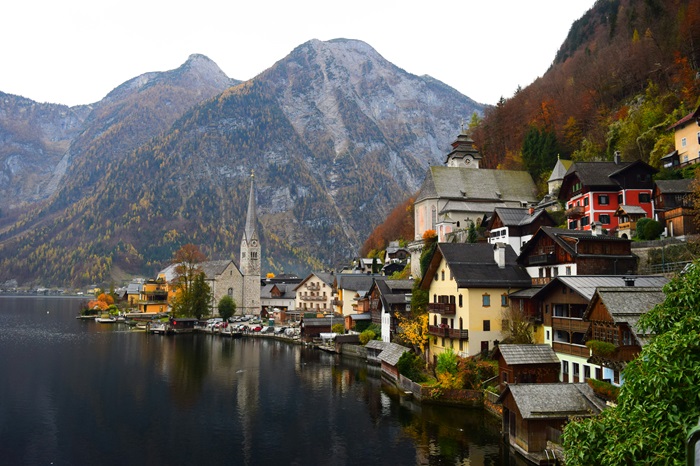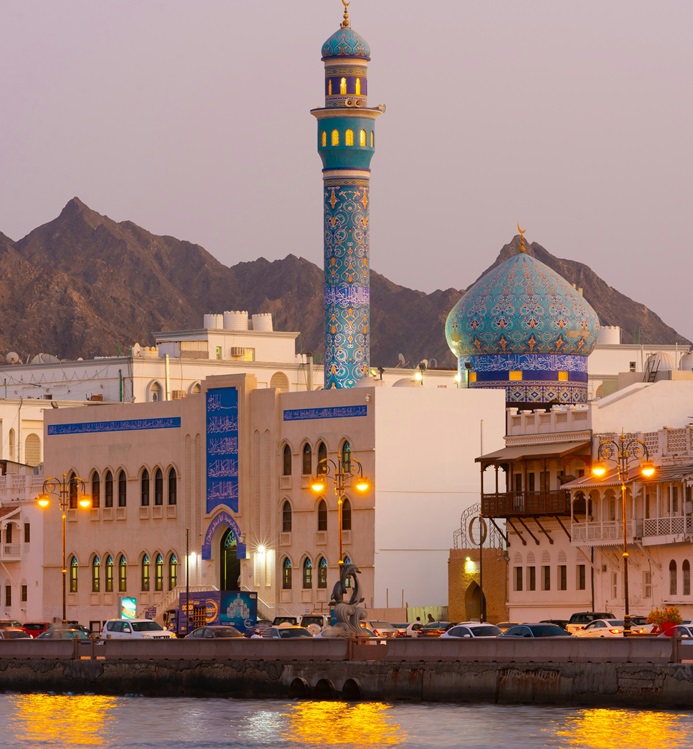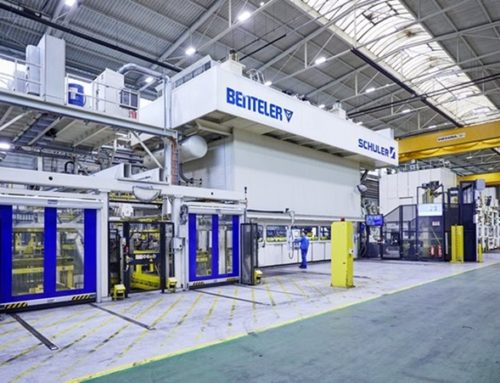1. Unlocking Innovation: North Carolina’s Thriving Tech Landscape
In the heart of the American South lies a dynamic and rapidly evolving tech ecosystem: North Carolina. Known for its rich history, picturesque landscapes, and vibrant culture, this state has quietly transformed itself into a hub of innovation, drawing attention from entrepreneurs, researchers, and investors alike.
The Research Triangle: Where Ideas Take Flight
At the epicentre of North Carolina’s tech revolution stands the Research Triangle Park (RTP)—a sprawling 7,000-acre expanse that bridges the cities of Raleigh, Durham, and Chapel Hill. RTP is more than just a physical location; it’s a crucible of creativity where academia, industry, and government intersect. Here, world-class universities collaborate with Fortune 500 companies, startups, and research institutes. The result? A melting pot of ideas that fuels breakthroughs in fields ranging from biotechnology to artificial intelligence.
From Tobacco Fields to Silicon Dreams
North Carolina’s journey from tobacco plantations to tech innovation is nothing short of remarkable. Once known for its tobacco industry, the state has diversified its economic portfolio. Today, it boasts a thriving tech scene that rivals established hubs like Silicon Valley and Boston. Companies like Google, Meta (formerly Facebook), and Apple have set up shop here, drawn by a unique blend of talent, resources, and quality of life.
The Coastal Connection: Aquaculture and Renewable Energy
Beyond the Research Triangle, North Carolina’s tech prowess extends to its coastal regions. NC EcoTech, headquartered in Wilmington, focuses on coastal infrastructure, aquaculture, and renewable energy ancillary services. As climate change accelerates, these sectors play a pivotal role in sustainable development. From harnessing offshore wind energy to advancing aquaculture practices, North Carolina’s coastal tech ecosystem is making waves.
Public-Private Synergy: A Winning Formula
What sets North Carolina apart is its collaborative spirit. Public and private sectors join forces to create an environment where innovation thrives. Competitive tax rates, incentive programs, and strategic investments support companies as they navigate the tech landscape. Whether you’re a startup founder or a seasoned executive, North Carolina welcomes you with open arms.
In this Article
In the paragraphs that follow, we’ll delve deeper into North Carolina’s innovation journey. We’ll explore the strengths, challenges, and opportunities that define its tech ecosystem. Buckle up as we uncover the stories of visionary entrepreneurs, groundbreaking research, and the relentless pursuit of progress.
Research Triangle Park (RTP), nestled in the heart of North Carolina, stands as a testament to innovation, collaboration, and boundless possibilities. Let’s explore this vibrant hub:
1. The Birth of RTP:
– Established in 1959, RTP emerged from a visionary partnership between state and local governments, nearby universities, and local business interests.
– The park spans an impressive 7,000 acres of pine forest, boasting 22.5 million square feet of built space.
– Its strategic location bridges the cities of Raleigh, Durham, and Chapel Hill, forming a geographic triangle with three renowned research universities: North Carolina State University, Duke University, and the University of North Carolina at Chapel Hill.
2. A Nexus of Creativity:
– RTP is not merely a physical space; it’s a crucible where academia, industry, and government intersect. Here, bold ideas take flight.
– More than 300 companies call RTP home, employing 55,000 workers and an additional 10,000 contractors.
– Among these companies, GlaxoSmithKline houses one of its largest R&D centers, with approximately 5,000 employees. Meanwhile, Cisco Systems has established its second-largest campus here, after its Silicon Valley headquarters.
3. Driving Forces:
– RTP’s success owes much to its entrepreneurial culture and visionary leadership. It wasn’t always smooth sailing, but in 1965, heavy recruiting efforts by the state government and the influential Archie Davis sparked a surge of growth.
– The park’s mission? To increase innovation, retain graduates within the state, and harness the strengths of its neighbouring universities.
4. Collaboration and Synergy:
– RTP thrives on collaboration. It’s a hub where science and technology firms, government agencies, academic institutions, startups, and nonprofits converge.
– Nestled at the center of three Tier-1 research universities, RTP hosts hundreds of events and boasts a directory of over 375 companies.
5. Beyond Boundaries:
– RTP’s influence extends beyond its physical borders. It spills into Wake County, reaching toward Cary and Morrisville.
– As North Carolina’s tech landscape evolves, RTP remains a beacon—a place where people, ideas, and innovation intersect, shaping the future of technology and discovery.
2. Navigating the Nearshouring Wave: FDI Dynamics Near Europe

Joss Woodhead Unsplash
A Growing Trend
Nearshoring, the strategic movement of production closer to end-consumers, is gaining momentum. While not a new concept, it has surged in recent years. In fact, more companies mentioned nearshoring in their 2023 earnings calls than in any previous year since data collection began in 2010. But what exactly is driving this trend?
The Nearshoring Boom
Foreign companies have pledged over $82 billion to manufacturing projects in 15 nearshoring destinations across central and eastern Europe (CEE) and north Africa between 2022 and 2023. This impressive figure represents a 62% increase compared to the pre-pandemic years of 2018–2019. These 15 countries met specific criteria to be classified as nearshoring destinations, including a substantial share of their greenfield FDI in manufacturing since 2010 and attracting at least five FDI manufacturing projects in 2023.
Why Nearshoring Matters
1. Resilience and Risk Mitigation:
– The Covid-19 pandemic exposed the vulnerabilities of overstretched global value chains heavily reliant on China.
– Nearshoring allows companies to build resilience by shortening supply chains and reducing dependence on distant production centres.
2. Navigating Tariffs and Protectionism:
– The EU and the US have increasingly imposed tariffs on strategic sectors like electric vehicles (EVs), batteries, and semiconductors.
– Nearshoring helps companies bypass these tariffs by producing in locations closer to their target markets.
3. Different from Reshoring:
– Unlike reshoring (a full retreat to domestic markets), nearshoring seeks cost-effective manufacturing hubs within proximity.
– Companies balance cost savings with proximity to end-consumers.
Real-World Examples
1. Renault’s Expansion in Turkey:
– French carmaker Renault invested €400 million to expand its factory in Bursa, Turkey, turning it into an international export hub.
– This move followed the closure of Renault’s Russian operations due to the invasion of Ukraine. Most cars produced in Bursa now head to Europe.
2. BYD’s European EV Factory:
– Chinese EV and battery maker BYD is developing its first European EV factory in Szeged, Hungary.
– This decision came shortly after the EU initiated an investigation into China’s subsidies for its EV industry.
3. Ionway’s EV Battery Material Facility:
– Ionway, a joint venture between Germany’s Volkswagen and Belgium’s Umicore, is building its first production facility for cathode active material used in EV batteries in Nysa, Poland.
Conclusion
Nearshoring is reshaping the FDI landscape close to Europe. As companies seek agility, risk diversification, and competitive advantages, these manufacturing hubs play a pivotal role in the global economy. The journey continues, and the allure of nearshoring remains strong.
3. Opportunities Abound: Oman’s Foreign Direct Investment Landscape

Anfal Shamsudeen Unsplash
A Flourishing FDI Environment
Oman, with its strategic location on the southeastern coast of the Arabian Peninsula, has been actively courting foreign investors. Here are some key insights into Oman’s FDI landscape:
1. Inflows and Resilience:
– Despite the global economic crisis triggered by the Covid-19 pandemic, Oman’s FDI inflows demonstrated resilience. In 2021, FDI inflows reached USD 3.61 billion, showing an increase from USD 2.86 billion in the previous year.
– The country’s FDI stock remains robust, standing at an impressive USD 34 billion in 2021.
2. Duqm Special Economic Zone (SEZ):
– A major catalyst for FDI in Oman is the Duqm SEZ. This ambitious development involves the construction of a port, an airport, a refinery, and tourist facilities.
– Investors have been drawn to Duqm’s strategic location, which offers access to international markets and a business-friendly environment.
3. Investment Law Reforms:
– Oman’s Foreign Capital Investment Law, adopted in 2020, played a pivotal role in attracting foreign investors. It abolished foreign ownership limits, streamlined registration and licensing procedures, and aligned incentives for foreign investors with those given to local investors.
– The international community welcomed these reforms, signalling Oman’s commitment to fostering a conducive investment climate.
4. Sector Focus:
– While the bulk of FDI in Oman historically flowed into the oil & gas sector, there has been diversification. Other sectors, including financial services, manufacturing, and real estate, have also attracted investment.
– The development of non-oil sectors is a priority, and Oman’s leadership actively encourages sustainable growth beyond hydrocarbons.
5. Global Entrepreneurship Index:
– Oman’s entrepreneurial spirit has not gone unnoticed. In the Global Entrepreneurship Monitor (GEM) Report 2023/2024, Oman soared to the 11th position globally, surpassing 27 countries from its previous rank.
A Promising Future
As Oman continues to enhance its investment climate, foreign investors are increasingly recognising its potential. Whether it’s the allure of Duqm’s SEZ, the relaxed investment regulations, or the country’s commitment to diversification, Oman stands as a beacon of opportunity in the region.
In the coming years, expect Oman to remain a compelling destination for FDI, driven by innovation, infrastructure development, and a forward-looking vision.
4. Forging Economic Ties: The UK-GCC Free Trade Agreement

Mariam Soliman Unsplash
Setting the Stage
As the global economy continues to evolve, nations seek strategic partnerships that transcend borders. The UK and the GCC—a regional bloc comprising Bahrain, Kuwait, Oman, Qatar, Saudi Arabia, and the United Arab Emirates—have come together to explore new avenues of economic cooperation.
The Sixth Round of Negotiations
1. Shared Goals:
– The sixth round of negotiations marks a critical juncture. Both parties aim to enhance trade relations, boost investment flows, and foster economic growth.
– The UK, post-Brexit, seeks to diversify its trade partnerships beyond Europe, while the GCC nations envision a stronger foothold in the UK market.
2. Challenges and Opportunities:
– Negotiating an FTA involves addressing complex issues such as tariffs, non-tariff barriers, intellectual property rights, and services trade.
– Opportunities abound: from facilitating smoother access to goods and services to promoting innovation and collaboration.
3. Strategic Sectors:
– Energy, finance, infrastructure, and technology are key areas of interest. The GCC’s oil and gas reserves align with the UK’s expertise in financial services and technology.
– The FTA could unlock investment opportunities, create jobs, and strengthen ties in these sectors.
Beyond Trade: Cultural Exchange and Diplomacy
1. People-to-People Connections:
– An FTA isn’t just about goods and services; it’s about people. Cultural exchange programs, educational collaborations, and tourism can deepen understanding between the UK and the GCC.
2. Navigating Geopolitics:
– The region faces geopolitical challenges, from conflicts to shifting alliances. An FTA provides a platform for dialogue and stability.
Conclusion
As negotiators gather around the table, they carry the hopes of businesses, entrepreneurs, and citizens. The UK-GCC FTA isn’t merely an economic document; it’s a bridge connecting nations, cultures, and aspirations. Stay tuned as we unravel the intricacies of this pivotal agreement.
5. Navigating the Stars: India’s Bold Space Policy Shift

Andrew Russian Unsplash
The Cosmic Shift
In a momentous decision, the Union Cabinet of India has set its sights on the celestial expanse. By liberalising the Foreign Direct Investment (FDI) provisions in the space sector, India aims to propel itself into a new era of exploration, innovation, and commercialisation.
The Key Reforms
1. 100% FDI in Space:
– The amended policy now allows 100% FDI in the space sector. This bold move opens the doors wide for international investors, signalling India’s commitment to fostering collaboration beyond its terrestrial boundaries.
– Foreign capital can now flow seamlessly into satellite ventures, launch vehicles, spaceports, and the manufacturing of space-related components and systems.
2. The IN-SPACe Revolution:
– At the heart of this transformation lies the Indian National Space Promotion & Authorisation Centre (IN-SPACe). This newly empowered body grants authorisations, facilitates private sector participation, and oversees the entire spectrum of space activities.
– Non-governmental entities (NGEs) are now invited to undertake end-to-end activities in the space sector, from launching satellites to providing communication, remote sensing, and navigation services.
The Cosmic Canvas Unfolds
1. Commercial Ventures:
– With liberalised FDI, India’s private sector can now dream big. Startups, corporations, and entrepreneurs have a celestial playground to innovate, disrupt, and contribute to humanity’s cosmic quest.
– From Earth observation constellations to lunar missions, the canvas awaits fresh strokes of ingenuity.
2. Global Partnerships:
– The policy shift invites international collaboration. Joint ventures, technology transfers, and cross-border alliances will accelerate progress.
– India’s prowess in low-cost launches and satellite deployment can now harmonise with global players’ expertise.
3. Space Diplomacy:
– Beyond economics, space diplomacy blooms. As India’s satellites orbit the Earth, they beam goodwill, connectivity, and scientific data across borders.
– The stars become bridges, transcending geopolitical boundaries.
Conclusion
As rockets ignite and satellites soar, India’s space odyssey enters a thrilling chapter. The implications ripple across industries, economies, and imaginations. Buckle up—the cosmic voyage has just begun.
Featured image Parsa Mahmoudi via Unsplash







